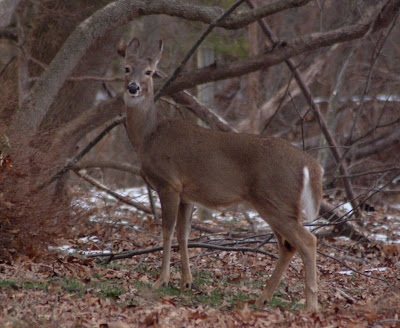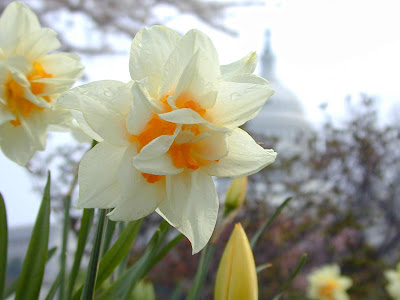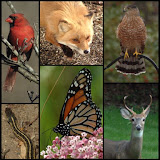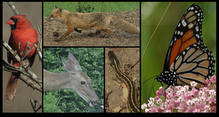The family of three white-tailed deer was seen in the Colvin Run Habitat for the first time in a little over a month. Mom and her two young ones, who are now a year old, were walking very slowly, scouring the leaves on the ground for some food. It always surprises me that they do not eat the sunflower seeds on the ground under the bird feeders. Although in the last two weeks, there has been some animal digging through the seeds as I spot fresh holes nearly every morning.

The family of three appears to have survived the winter. Their coats seem in good shape. In each of the three photos, there is one sign of spring – green grass is clearly growing – a sign that these deer will soon have a new supply of food. In fact, it is likely, that this new grass is why the deer are scouring the ground.

The first photo shows mom with the two young ones, who clearly continue to be differentiated by size. The second photo shows mom; the third photo shows the smaller of the two young. As always, they clearly see and hear me, but pay me little attention and do not even raise their white tails as an alarm.

As I reported on February 10, I believe that the dad was a victim of road kill in early December. With his rack, he was quite distinguished. The road kill was within a mile of the Habitat and from my observations was nearly identical to the photographed dad.
Here is a quick index to previous posts about this family of deer:
>Deer Family Strolling
>Dad Deer Brings Family
>The Daily Deer
>Deer Dining
>The Deer and the Fox
>White-tailed Deer in the White Snow
Sunday Morning Update: At 8 AM on the way to church and on our way out of the neighborhood, we had to stop the car to allow this deer family to cross. They crossed at a fast walk and then turned to look us over as we continued. Perhaps they,
like the turtle, were headed to church, or perhaps they were hading to a familiar stand of pines to rest the day away.











